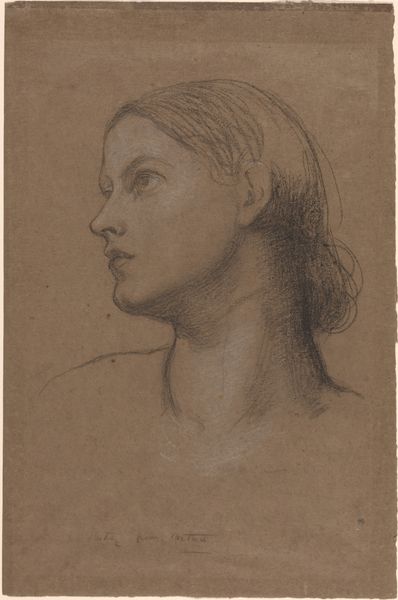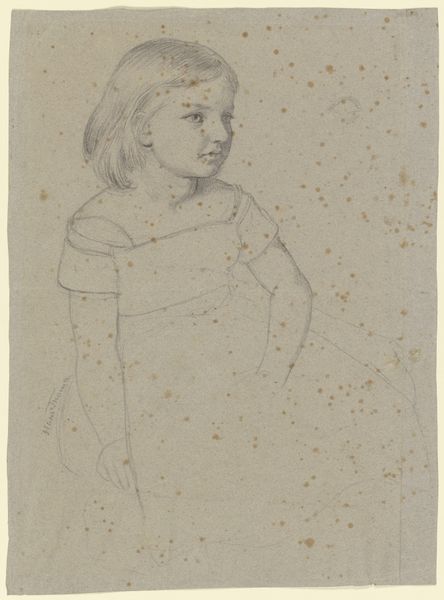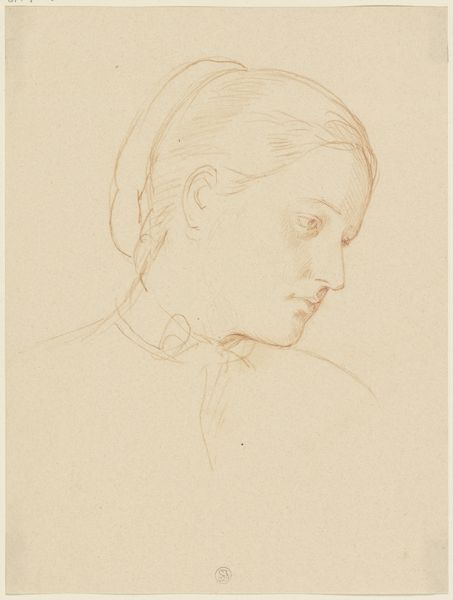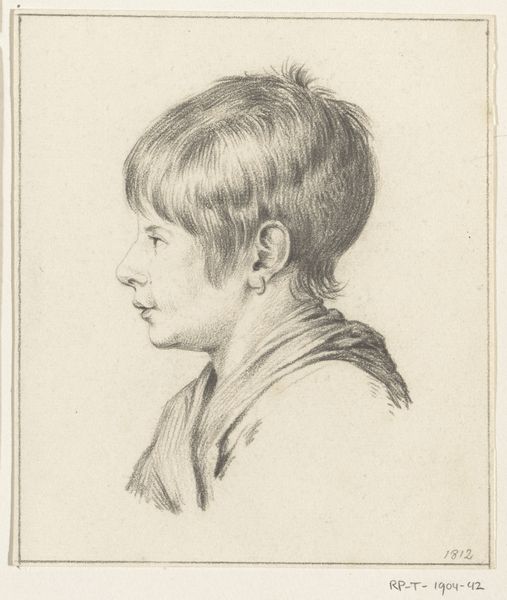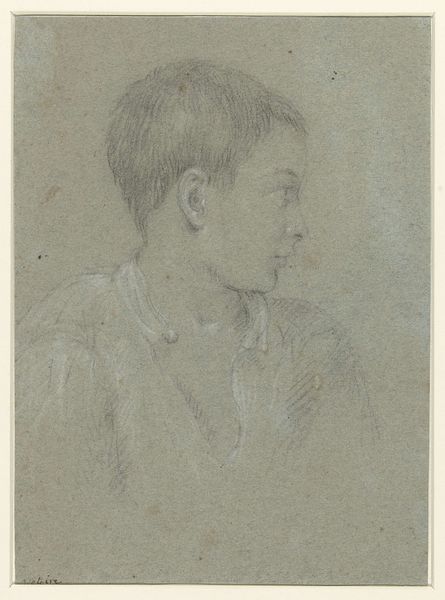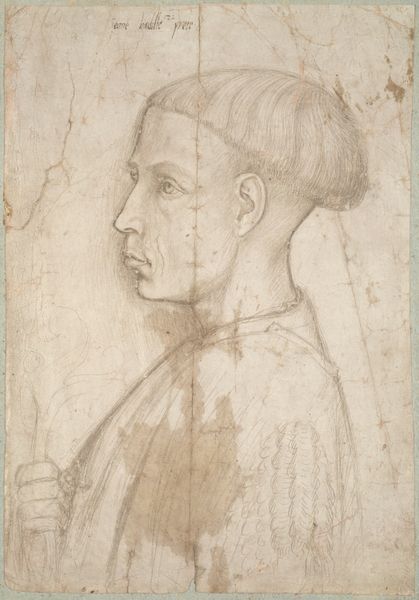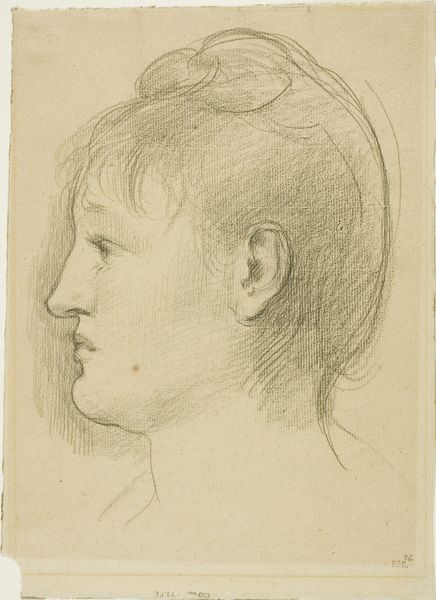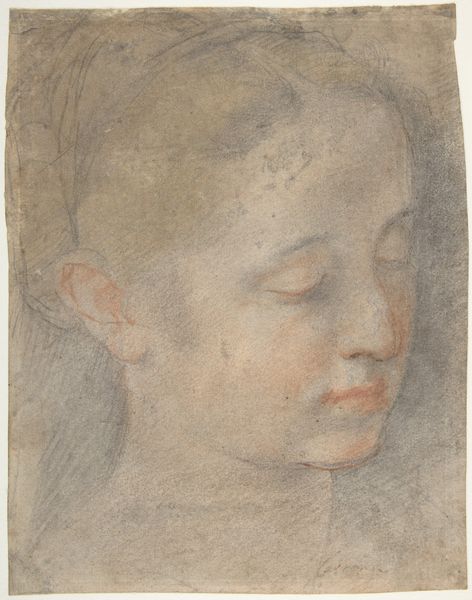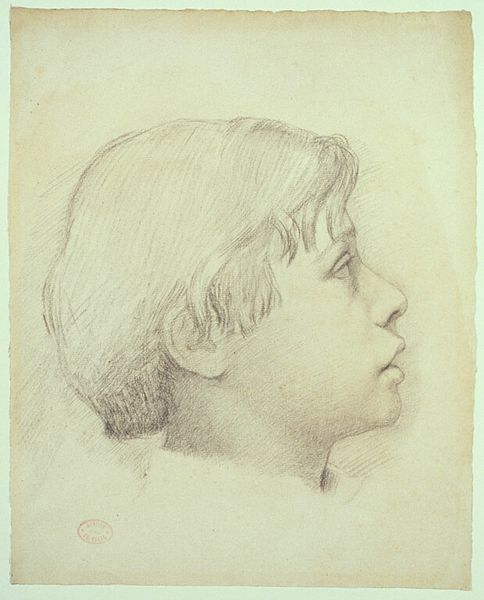
drawing, pencil
#
portrait
#
drawing
#
figuration
#
pencil drawing
#
pencil
#
portrait drawing
#
early-renaissance
Dimensions: overall: 20.7 × 15.4 cm (8 1/8 × 6 1/16 in.)
Copyright: National Gallery of Art: CC0 1.0
Curator: Here we have a work believed to date from the 1440s: a profile portrait, tentatively titled "Portrait of a Boy in Profile," thought to depict one Giovanni Badile. It's rendered in pencil, and exhibits traits of Early Renaissance style. Editor: It's remarkably simple. Spare, even. My first thought is how delicate it seems—the thin lines, the faded color, it evokes a quiet and contained mood. It's humble materials that gives it that direct intimate feel, isn't it? Curator: Indeed. The choice of pencil immediately strikes me, offering both immediacy and a certain level of refinement. While unassuming, it nevertheless carries the symbolic weight of Early Renaissance humanism. Look how carefully the boy’s features are rendered. Editor: That restraint speaks volumes. You sense the artist using these newly developing methods of perspective to study real objects in the physical world. It allows us to engage so personally. Can you feel how different this portrait would be if it was sculpted out of marble, a material with its own historical weight, right? Curator: Exactly! And if we return to the Renaissance for a moment, this type of precise portraiture signified the individual, elevating his earthly presence. The profile pose, particularly, evokes classical precedents and lends a sense of dignity. Editor: Though I'm mostly drawn to the visible signs of its making: you see every mark that traces out the lines, every correction, the smudging around his neck. How can these fragile and impermanent forms endure so profoundly across time? I like that question best. Curator: I think that is part of its power! Its simplicity transcends mere representation; it invites contemplation about the human condition itself. It really speaks to that fleeting quality of time. Editor: For me, it is also a subtle testament to the artistic labor, which sometimes becomes obscured behind concepts such as “genius” when talking about the Early Renaissance, the making and using. It lets that be known too. Curator: An excellent point! The very act of its making is now part of its appeal to us. A small image with much to offer. Editor: It's amazing what you can uncover when you focus on the process, and when the drawing medium and materials give way to intimate engagement.
Comments
No comments
Be the first to comment and join the conversation on the ultimate creative platform.

